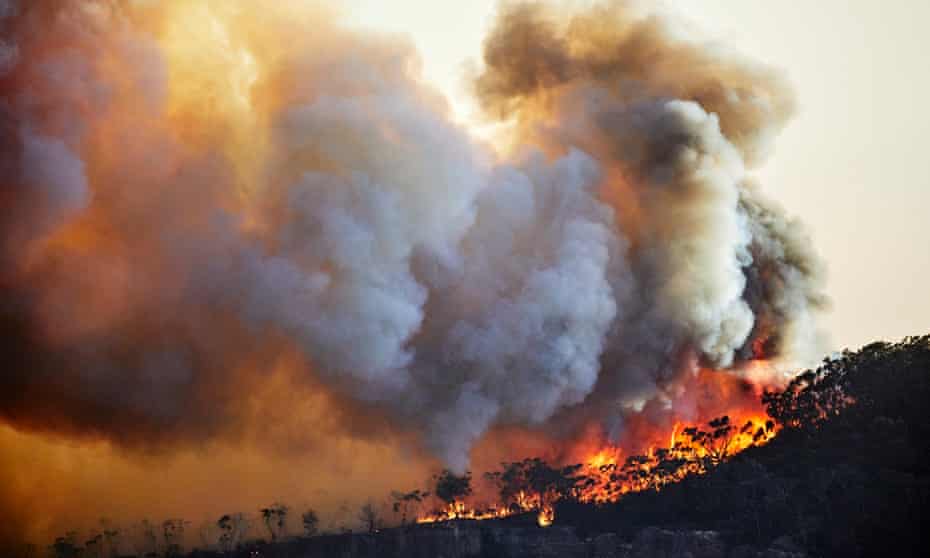The season now lasts 130 days and will continue to lengthen even if global heating can be kept to 1.5C, researchers say.

Fri 1 Jul 2022 03.30 AEST
Last modified on Fri 1 Jul 2022 03.32 AESTIn the south-east of the country, where forests and communities are still recovering from the unprecedented Black Summer bushfires of 2019 and 2020, there are now 11 extra days where the risk of fire is at its most extreme, compared with the late 1970s.
Even if global heating can be kept to 1.5C – the most ambitious temperature goal under international climate agreements – Australia’s fire season will continue to lengthen, the study published in the Reviews of Geophysics found.
“These numbers are confronting. We no longer have a stable fire regime,” said Dr Pep Canadell, a climate scientist at CSIRO and a co-author of the study.

The study looked at fire seasons in regions across the planet. It assessed the number of days per year that registered on an international index of fire weather, which takes into account temperature, humidity and the dryness of fuel.
Globally, the number of fire weather days per year had risen by 14 between 1979 and 2019.
Canadell said while climate models had suggested the country’s south-east would be exposed to longer fire seasons, the increases found in the study were greater than models had forecast.
He said that as the fire season got longer, it reduced the time available for firefighters to safely carry out controlled burning.
A study led by Canadell last year found the frequency of very large forest fires had risen significantly since 2000. Even though many Australian forests are naturally adapted to fire, the recovery window was also shrinking.
Prof David Bowman, the director of the Fire Centre Research Hub at the University of Tasmania, who was not involved in the study, said the trend is “very serious”.
“We are already seeing stressed ecosystems and human communities and it will only get worse. The underlying drying and warming trend makes more frequent intense fire inevitable,” he said.
Climate models analysed for the study suggest 1.5C of global heating will add a further nine days to the fire season in the south-east of the country.
Canadell said this was because Australia’s climate was historically highly variable, with periods of long drought that can shift to floods.
Bowman said the forecasts from climate models were “lagging reality” and “the future, in a sense, is now”.
During the Black Summer bushfires, an estimated 3 billion animals were killed or displaced in an event unprecedented in the country’s eucalyptus-dominated forests.
One study said some 7.5m hectares of those eucalyptus forests had burned in 2019 and 2020 – more than seven times the average seen each year from satellites.
Bowman said before the Black Summer bushfires, “we could not imagine the scale of the eucalypt forest fires caused by anomalous drought”.
The past two summers have been influenced by La Niña – a climate phase influenced by ocean temperatures in the Pacific that tends to deliver cooler and wetter conditions for Australia’s south-east. This tends to lessen the bushfire risk and Australia could see a rare third La Niña summer later this year.
“Once the current La Niña subsides we could be in for another round of bushfires under an abruptly hotter and drier climate. The models can’t captures such violent swings,” Bowman said.
No comments:
Post a Comment